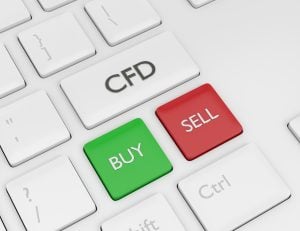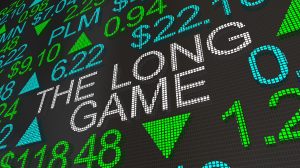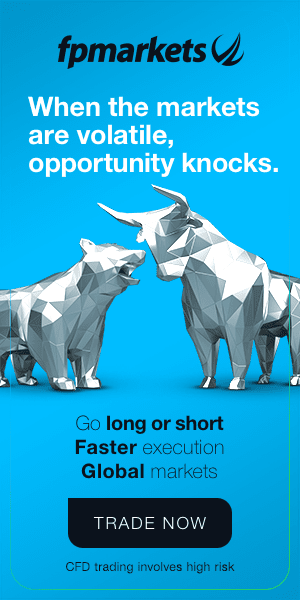Trading, be it long-term or short-term trading is, ultimately, trader dependent.
For the benefit of newer traders, below is a list of must-know terms before considering CFD position trading:
- Asset classes: Forex, commodities and cryptocurrencies, for example.
- Financial instruments: Assets that can be traded.
- Derivatives: Represents a contract between two or more parties based on an underlying financial asset.
- Underlying asset: A financial asset under which the value of a derivative is built.
- Hedging: A risk-management technique that, at its most basic, involves taking an opposing position in a comparable asset.
- Protective stop-loss: An order instructing a broker to purchase or sell a financial instrument at a specific price. A protective stop-loss is intended to restrict loss beyond a pre-determined risk tolerance.
- Margin Requirement: the percentage of marginable securities that an investor must outlay with his/her own cash.

What is Long-Term Trading?
A ‘CFD long-term position trade’ is another common term for long-term Investing.
The investor purchases an asset in the hope it will rise in value over time. This type of longer-term investment is less concerned with short-term price movements and current events unless affecting the CFD trader’s long-term view of the position.
CFDs can be a good choice for specific traders, such as long-term investors. But each individual must weigh the costs and benefits of using CFD contracts and adhere to their CFD trading strategy’s rules of engagement. Irrespective of whether you’re a long-term market participant or a short-term speculator, always do your due diligence.
A notable point to bear in mind, regardless of whether you follow technical analysis or fundamental analysis, or both, to generate trading decisions, equity will be tied up for the term of the trade, therefore, could represent an opportunity cost. You should allow for this in your trading plan.
Long-Term Trading Indicators
For the most part, as briefly touched on above, long position CFD traders employ a combination of technical analysis and fundamental analysis to assess possible price patterns in the market.
Common technical indicators utilised for position trades are moving averages and price action-based concepts, such as support and resistance, trendline studies and candlestick analysis. In addition, the relative strength index (RSI) and the Moving Average Convergence Divergence (MACD), both of which measure the speed of price change: momentum, and Bollinger Bands (measures volatility).

200-Day Simple Moving Average
The 200-day simple moving average is a commonly employed dynamic value, assisting traders with things like long-term trend identification and also delivers support and resistance.
Traders and investors watch the 200-day simple moving average closely. A ‘price close’ above the value indicates a trend may be developing to the upside. Conversely, a ‘price close’ beneath the value suggests a downside bias. Alternatively, the focus may be directed to the ‘direction’ of the simple moving average (is the SMA facing higher or lower?). In addition, some will look for ‘crossover strategies. A common approach, of course, is the 50-day simple moving average employed alongside the 200-day simple moving average. The shorter-term moving average crossing above the longer-term moving average (sometimes referred to as a ‘Golden Cross’) suggests an upside tone, and vice versa for a shorter-term moving average crossing below the longer-term value (‘Death Cross’).
The Relative Strength Index (RSI)
Offering traders and investors a way of gauging momentum, the relative strength index (RSI) measures the speed of price move of your traded markets.
Ways long-term investors may use the RSI are through identifying overbought (+70.00) and oversold (-30.00) conditions. The former offers an area where market participants may see upside momentum diminish. Oversold is a space where downside momentum should eventually level off. Therefore, can be something you may use to spot dip-buying scenarios and sell-on-rally themes within trending environments.
Other methods you may use are divergences, failure swings and trend identification (crossing the 50.00 centerline).
Forex and CFD (Contracts for Difference) Brokers:
Numerous CFD and Forex trading brokers exist. Prior to opening a CFD trading account, it is vital that you find a fully regulated and trustworthy Forex and CFD broker. Ideally, it should be one that does not offer you incentives or gimmicks.
Consider a broker who has been in business for an extended period of time and has a track record of positive ratings, a transparent pricing structure (financing cost), and outstanding customer service. FP Markets is a reputable Forex and CFD provider with a long track record, total regulatory compliance and various trading platforms.
Beginners, sign up for a demo account here: https://portal.fpmarkets.com/int-EN/demo/register
To start trading live, sign up for a CFD account here: https://www.fpmarkets.com/account-types/forex-account-types/







 Access +10,000 financial
instruments
Access +10,000 financial
instruments

